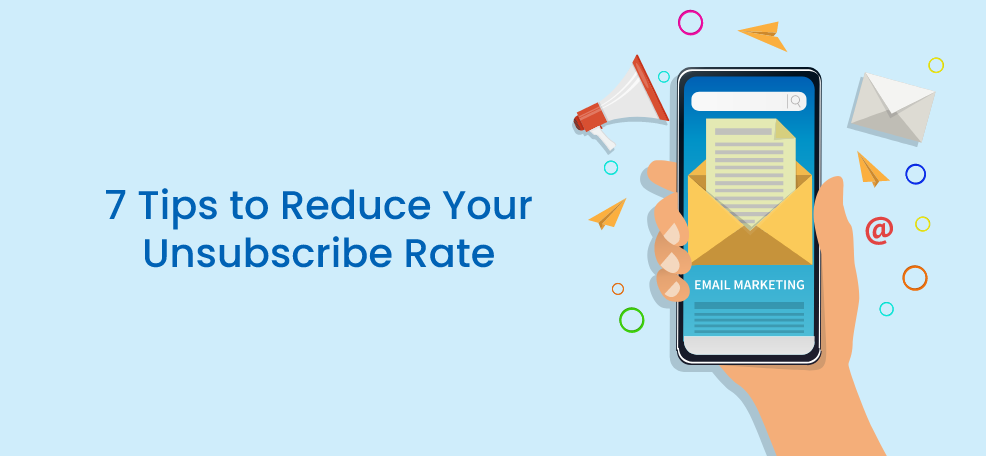People will unsubscribe from your email list. It’s inevitable, but in moderation, it’s not a problem. The average unsubscribe rate across email lists is around 0.17%. Of course, that figure varies a bit by industry and how frequently you send messages to subscribers.
If your list is shrinking faster than the number of subscribers you are acquiring, you need to take action. This post will share seven strategies you should follow to reduce your unsubscribe rate and ensure a successful email marketing campaign.
1. Segment your list
One common rookie mistake is sending the same emails to everyone on your list all the time. The problem with this approach is that you send content that doesn’t align with your subscribers’ interests. At this point, you can expect your unsubscribe rate to go off the charts.
To prevent this issue, group your recipients according to specific attributes so you can send targeted emails to each group. This practice is called list segmentation.
Email list segmentation radically boosts the performance of email marketing campaigns:
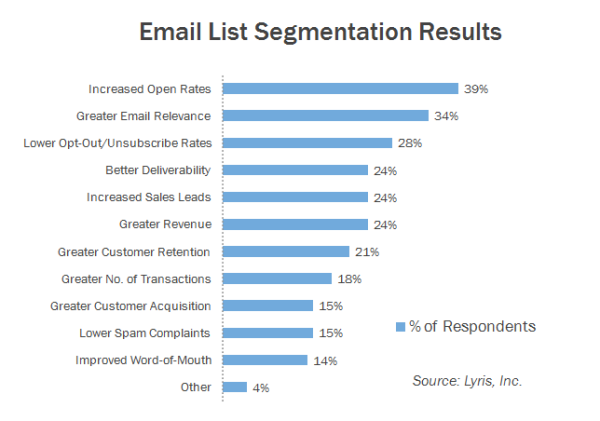
Let’s say you run an online fashion store. Instead of sending one email to both men and women, you can send separate emails for each segment. If you’re a pet store, you could send different emails to cat owners and dog owners.
You can see the logic and the benefits of this approach.
Aside from customer attributes, there are other ways you can segment your list. For example, you can monitor subscriber actions both on and off the page using lead nurturing tools. From there, you can distinguish between those who are only looking for products and those willing to buy products.
You can also segment based on your subscriber’s preferences. Ferguson, for example, asked its subscribers straight about the types of emails they would like to receive:
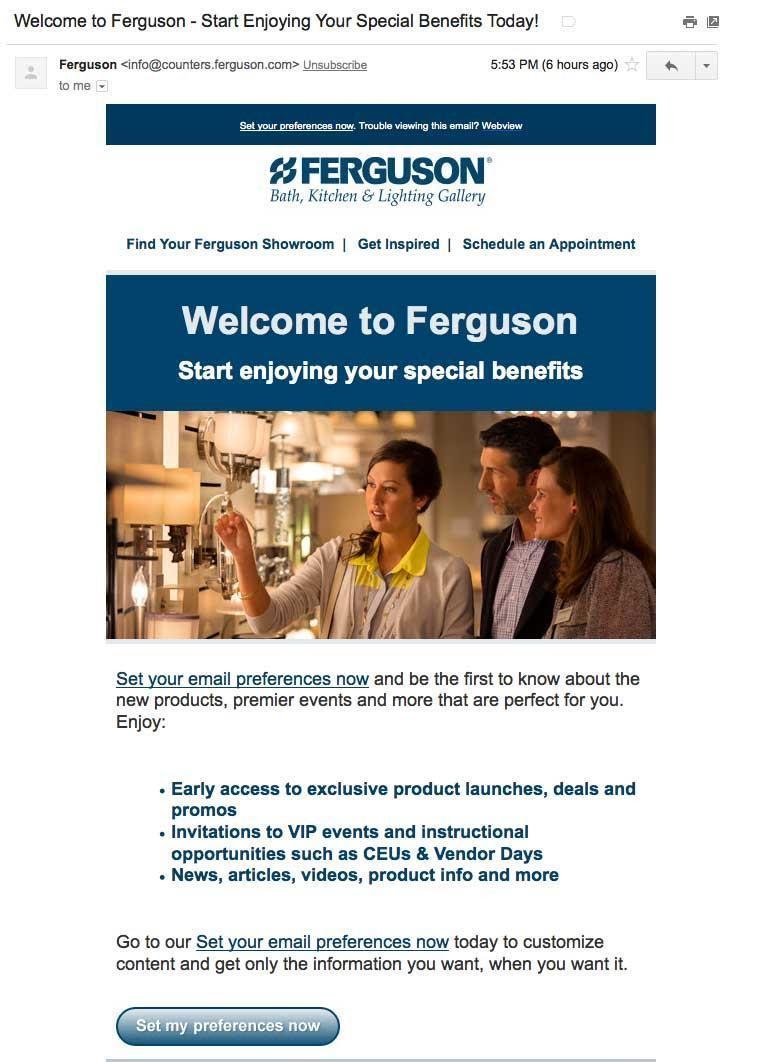
Using the feedback given by subscribers through the email, Ferguson can tailor its email campaigns to each subscriber group’s preferences. The strategy results in higher open rates and generates more conversions!
2. Use double opt-ins
A double opt-in is where an email message is sent to the subscriber to confirm their interest in joining your list. After they have clicked the confirmation link in the email you sent, they are added to your list.
Using double opt-in forms will helps improve the quality of your leads.

If you want to reduce your unsubscribe rates, double opt-ins are also your best bet. Double opt-ins help reduce your unsubscribe rates because they help validate consent.
Sometimes, people don’t realize they agreed to get promotional emails when giving you their email address. They might have just wanted to get their hands on that promo you’re offering. Or maybe, for some reason, they just thought they needed to put in their email address to access your blog.
For example, if you run an online course platform, a student may have opted for promotional emails to get a discount. However, they may not be inclined to get emails from you after that. A double opt-in ensures that they know they are signing up to get promotional material from you.
If you ask them to confirm their subscription, you’ll know for certain that your marketing emails are welcome in your subscribers’ inboxes. According to GetResponse, that’s precisely why double opt-in email lists generate twice as many clicks as single opt-in email lists.
3. Write compelling subject lines
In digital marketing, you have to catch your audience’s attention right away. That is also true for email marketing.
Pay close attention to your email subject lines as they are the first thing people see in their inboxes. If the email subject line is not compelling, your subscribers won’t bother to open your emails. Worse, they might even unsubscribe.
Writing compelling subject lines will encourage your subscribers to click on your messages. In general, subject lines highlighting the benefit a subscriber can get from reading your email work well.
Have a look at your inbox and look at the messages that stand out. You’ll probably notice a theme. Your emails’ subject lines should be short, straightforward, and urgent.
Most of your users’ email providers will show only the first 35 or so characters in your subject lines, so you need to make each character count.
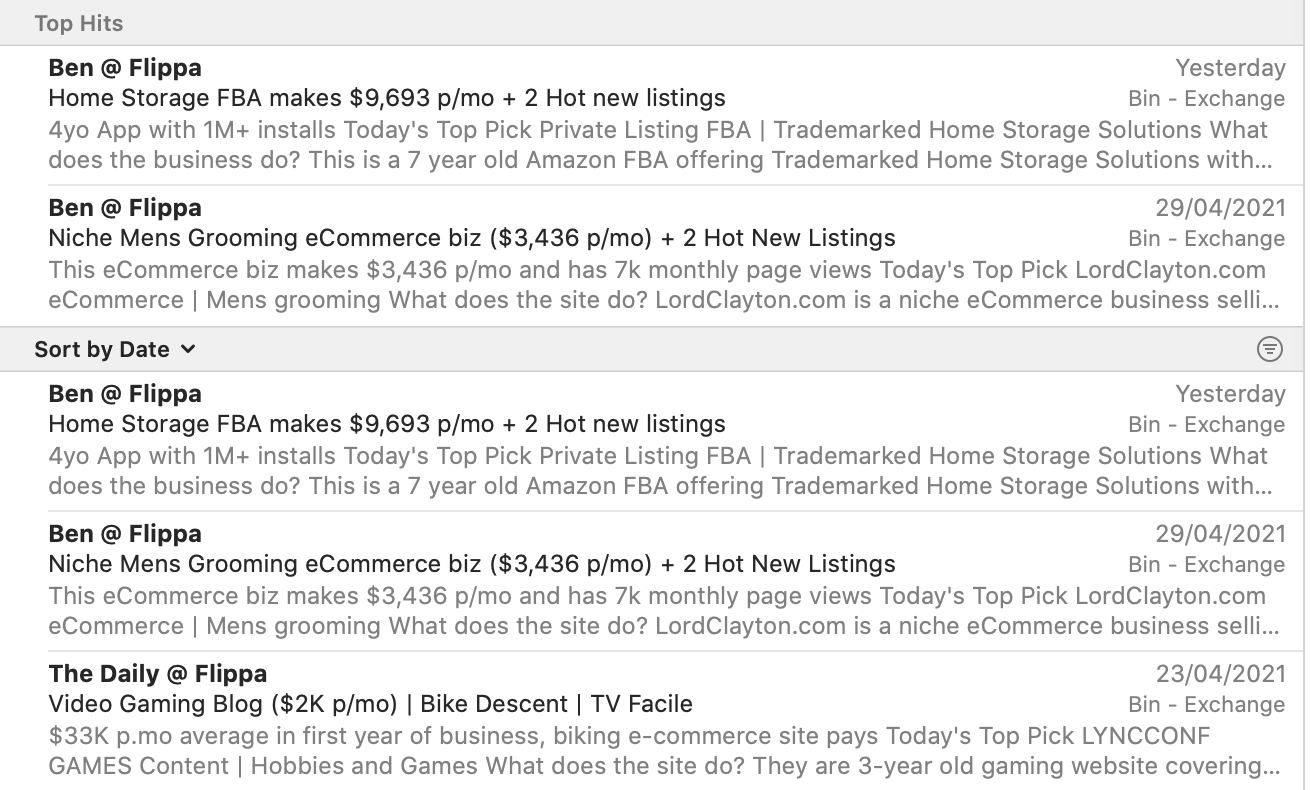
It’s fine to use a formulaic subject line if you find something that works. This is what Flippa has done. After all, people open your emails because they expect value. Your subject line just sets those expectations.
4. Craft useful and engaging content
Sometimes, people unsubscribe to your content because they realize that it isn’t relevant to them or doesn’t help them with their jobs. In other words, they don’t think it adds value to their lives.
On the other hand, when you create and send engaging content, people start looking forward to your next email. People have different ideas of what makes engaging content. You should ask your subscribers about their preferences.
Sending them a survey will help you determine the type of content they’ll appreciate.
You may also create buyer personas to represent your audience. A buyer persona distills everything you know about your audience and gives them a human name and face. It can include their age, sex, location, job, career goals, frustrations, and even their personality traits:
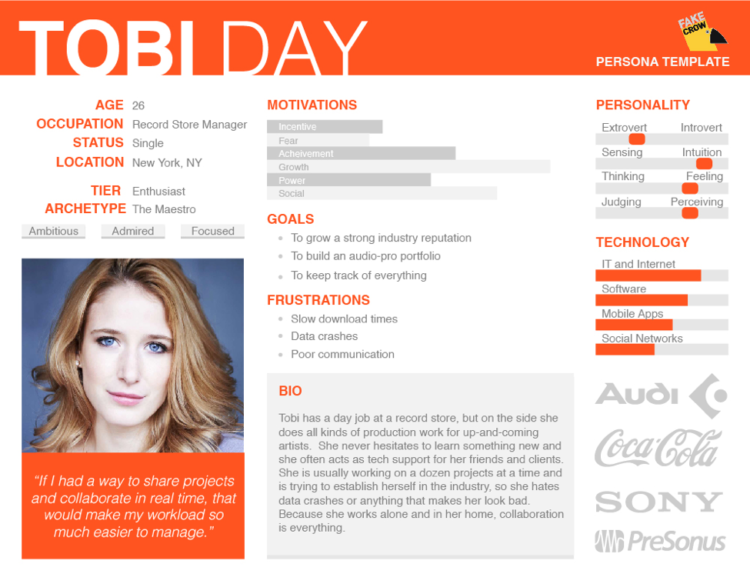
Whenever you’re at a loss about what to write for your next email campaign, you can always go back to your buyer personas and review their pain points. Based on “Tobi”’s customer persona, for example, you can create content that teaches them how to collaborate with colleagues in real-time.
Address your subscribers’ needs consistently, and you’ll keep your email subscribers loyal and engaged with your brand.
5. Offer varied content types
Your content may be engaging and valuable, but if there’s no variety to it, you’ll still have people unsubscribing. Nobody wants to read the same type of content all the time.
Adding some variety to your email marketing will keep your subscribers eager and engaged. You may share an interesting blog post in one email, while you may send a useful infographic in your next email. Wait a few more days, then send a roundup of your newest products.

There’s no shortage of content you can share with your subscribers to keep them coming back for more. According to Jilt, here are other tips you can follow to break the monotony:
- Showcase your most popular products.
- Educate.
- Leverage videos.
- Give a behind-the-scenes peek into your brand.
- Highlight user-generated content.
- Offer discounts and freebies.
- Conduct polls and quizzes.
The key is to be creative and to always think of ways to keep your subscribers engaged. Pro tip: Combine engaging content with a strong call to action that takes the subscriber to your landing page. By combining email marketing and landing page best practices, you can boost your conversions.
6. Optimize for mobile devices
According to Venturebeat, 65% of all emails get opened first using smartphones. This first touchpoint is crucial. If your subscribers can’t make heads or tails of your content the first time they open it, they probably won’t give it a second look when they finally get a chance to use their laptops. If they don’t read your emails, they’ll unsubscribe from your list sooner or later.
Here are some tips that will help you optimize your email for mobile devices:
- Use short subject lines: You wouldn’t want your email to look text-heavy when seen from a small screen.
- Make your emails under 600 pixels wide: Anything beyond 600 pixels will be difficult to see on a mobile device.
- Don’t use too many pictures: Pictures take a little longer to load than text. If you include too many pictures in your email, it might take forever for all the contents in the email to completely load.
- Employ big font: A font size of 13 or 14 pixels is acceptable.
- Avoid stacking links: If you put links one above the other, your subscriber might have difficulty clicking on the link they want to click in the first place.
- Ensure your call-to-action is not an image: If your image doesn’t load, your subscriber won’t see the CTA.
- Use a single-column template to guide you: If you use single-column templates as guides in creating your email, you’ll end up with a simple and effective design. That’s something you want for mobile.
- Ensure your CTA stands out: If your CTA button is too small, your subscriber might not see it on the small screen. If they do see it, they might not be able to click on it. Choose a color that will make your CTA pop out.
These tips will ensure your email visuals and content look good, even on a small screen. They will also help your email load quickly too.
7. Ask for feedback
Don’t give up too easily when someone clicks the unsubscribe button. It’s not over until it’s over. You still have a chance to win them back.
However, you need to ask them back right away. A feedback option on your unsubscribe page can help increase retention. It’s not as complicated as it sounds. There are many great examples of companies that have done this successfully. Here’s an example from Sears:
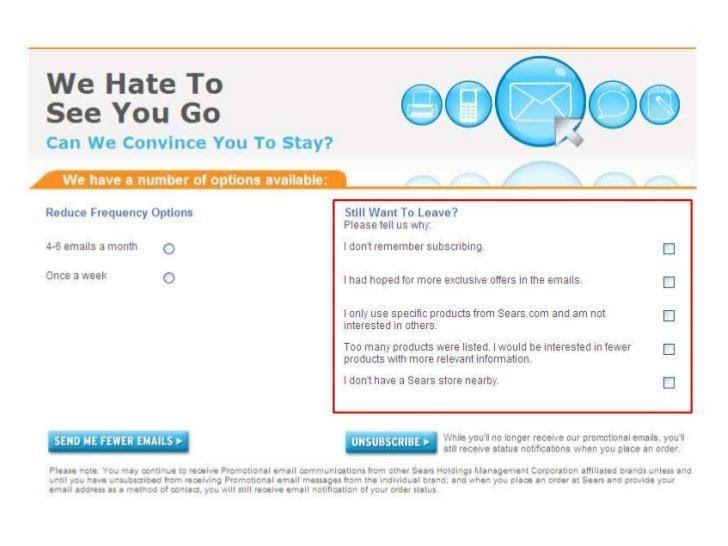
Even if people unsubscribe from your list, you can gain valuable insights about what you are doing wrong. Those answers will help you improve your email campaigns. In the long run, that data will help you prevent other unsubscribes.
Bottomline
Email marketing is critical to the success of your business. Since a core component of email marketing is the mailing list, you have to treat your mailing list as sacred and take unsubscribes seriously. While unsubscribes are par for the course, you want to keep them at a minimum. The good news is, there are ways you can reduce your unsubscribe rate.
You may start by segmenting your email list and sending content that’s relevant to each segment. You may also use double opt-ins to clean up your email list. Your content can also use a makeover – try writing better subject lines, crafting helpful content, and add variety to your campaign.
You also need to ensure that your readers can scan your content, regardless of the devices they use. Finally, if they do unsubscribe, asking for feedback can help you address their issues.
Providing great content to your email subscribers is the best way to reduce your unsubscribe rate in the long run. Make sure to learn from your mistakes and do more of what works.
Author’s Bio

Matt Diggity is a search engine optimization expert and the founder and CEO of Diggity Marketing, The Search Initiative, Authority Builders, and LeadSpring LLC. He is also the host of the Chiang Mai SEO Conference.
